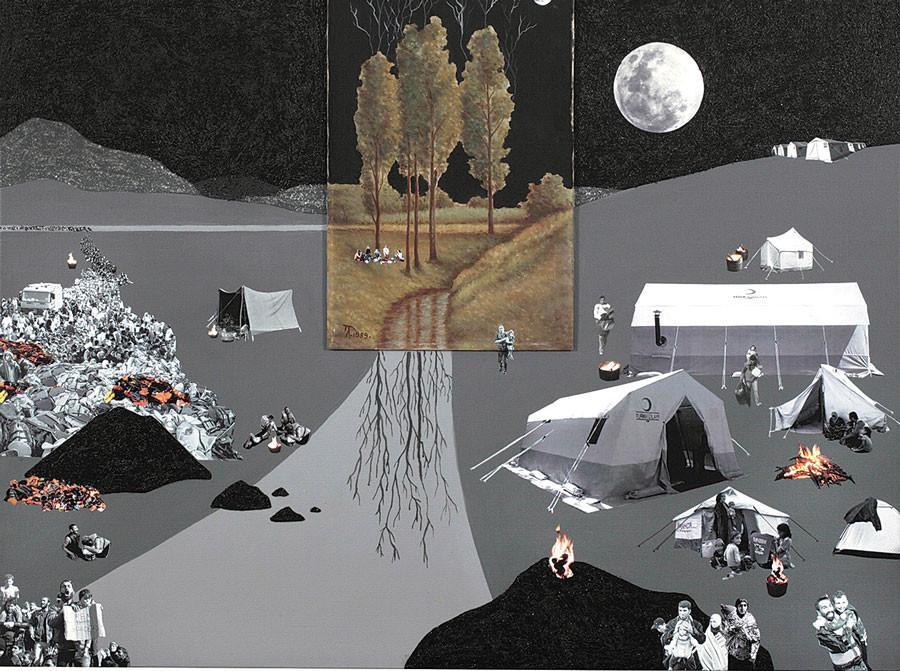
The Turkish artist Kezban Arca Batıbeki’s mysterious and sincere creative process precipitated a beautifully large and artistic output that includes migration, women issues and human beings in the 21st century.
Her current exhibition at Istanbul’s Pilevneli Gallery opens a new angle to question the realities of being an immigrant, and how this reflects onto regions where we are all living in.
“I have focused on women issues and women’s status in society my entire career. However, since there is a huge debate on migration, I realized that I should focus on this subject.”
This is not a coincidence for Batıbeki. Her atelier is in an old church, and she saw many migrant women. “It is impossible not to respond and be touched by the scenes I have seen,” she said. However, what she was after is to reflect these problems using her language.
Working with different materials and combining different mediums are part of her art career.
“I love to use different materials, and this has two reasons. One is I can get bored making art with the same materials; it becomes boring time to time, and also the theme that I want to study while creating art drives me to use different materials.”
In her current exhibition “Unpromised Lands,” her focus of the material is old landscape photographs.
“I’ve been collecting old landscape photos with my husband for years. These are almost 50 to 60-years- old. I always thought why people keep these photos in their homes, and finally, I realized that this is because of the feeling of longing a dream, and I thought that these dreams should find their place in my works,” she said.
As a result, Batıbeki took these photos and placed them in the middle of their collage works.
The most significant thing about these landscape photographs is the fact they are the images that carry a longing. Everyone somehow has those beautiful landscape paintings in their homes. People are longing to be there.
“That’s why I wanted to integrate this idea into my works. These lands, just like the landscape photos, are the places, immigrants, long to arrive. They think these lands are promised to them, but at the end when they arrive they realize this land is as they have expected,” said Batıbeki.
Not only the beautiful pictures, but the colors stand as a significant indicator in Batıbeki’s collages.
“There is no grey for an immigrant’s journey. This journey is white or black, meaning that it is life or death. That’s why I tried to use either white or black as I create the collages around the landscape photos,” said Batıbeki.
The artist also uses real photos of immigrants. Those photos are from the camp life and food queues while also depicting their journeys. The realities of the photography hit the audience as they get closer to look at the collages. It is also possible to see in some of the collages the photos that the artist used are of women refugees. “There are many different photos. I focus on human issues in these collages. However, on the other hand, as I did research on the life of an immigrant, I realized women always stay in the middle of the scene. For example, if there is a bread queue we see mainly women in the queues. Or in the camp life, we mainly see women in these photos. I think a woman makes a home or a family, and I think it is important to emphasize this in the collages.”
Batıbeki is always searching for new creations. She uses different materials and different subjects. She does not like to repeat herself. That’s why she is the artist of changes. For her, the creative process she aims to create is only to reflect herself.
“I think this is about sincerity and truthfulness,” she said.